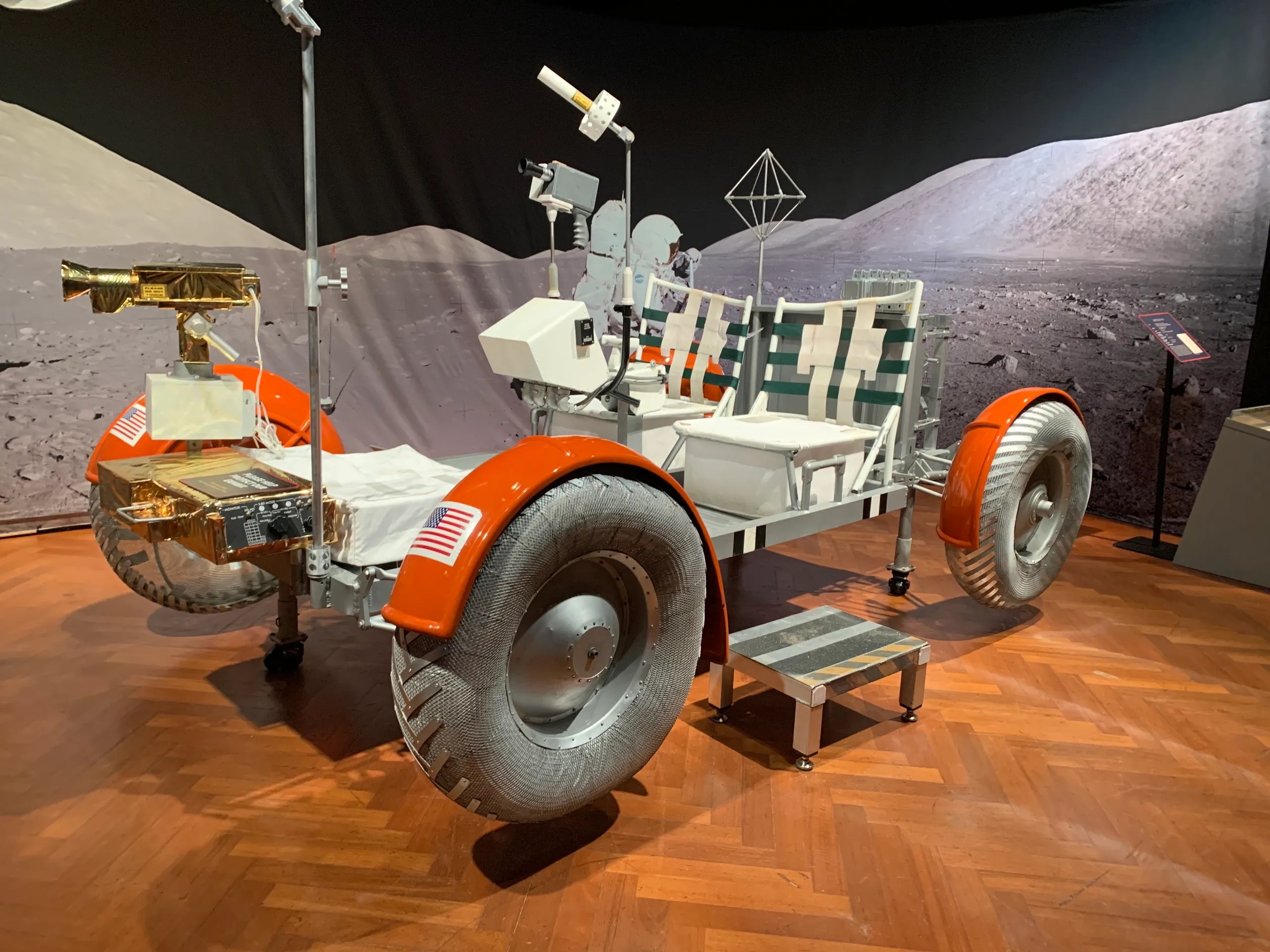11.07.2023
Two Albion College professors are set to help the National Aeronautics and Space Administration research the Earth's moon as part of an international effort beginning later this year.
Albion College professors Nicolle Zellner and Carrie Menold will conduct research as one of five teams selected to collaborate on lunar research in NASA's Solar System Exploration Research Virtual Institute.
The team that Albion experts are joining, the Center for Advanced Sample Analysis of Astromaterials from the Moon and Beyond (CASA Moon), is set to research samples brought back from lunar visits to better understand the history and processes of the moon.

The Henry Ford had an "Apollo: When We Went to the Moon" exhibit that included a full-size model of the Apollo 17 lunar roving vehicle that allowed astronauts to drive on the moon's surface. Two Albion College professors are contributing to NASA research to prepare astronauts for a return trip to the moon scheduled for 2025.
The team will be led by Charles Shearer, a senior research scientist of the Institute of Meteoritics and a research professor at the Department of Earth and Planetary Sciences at the University of New Mexico in Albuquerque.
"We're an international team of about 35 scientists from around the world, who each have an interest in analyzing samples from the moon in order to understand both about the moon's origin and evolution, and also what we can learn from the moon to interpret or to understand evolution of other objects in our solar system," said Nicolle Zellner, professor and chair of the Albion College Physics Department.
CASA Moon is set to study the evolution, origin and chronology of the lunar crust by analyzing samples from the moon prior to a lunar mission by NASA's Artemis program, which plans to land astronauts on the moon again by 2025. The Artemis III and Artemis IV missions will be the first crewed missions to the moon since the Apollo 17 mission in 1972.
“It’s an incredible opportunity to be able to work and interact with others under this umbrella,” Zellner said in a statement. “Brainstorming with experts all over the world and working on such a multifaceted lunar sample project is exciting.”
Partners of the team will each receive a portion of moon crust samples from NASA to research in their own labs and then collaborate mostly virtually and sometimes in-person, Zellner said. Nationwide partners of the CASA Moon team include Brown University, the University of Colorado, the Lunar and Planetary Institute, Goddard Space Flight Center, Johnson Space Center and the Lawrence Livermore National Laboratory.
CASA Moon international partners include the Autonomous University of Barcelona in Spain, the University of Western Ontario in Canada, the University of Copenhagen in Denmark, and the Australian National University and Curtin University in Australia.
Zellner said CASA Moon will specifically take a look at the sample of the moon's crust from the Apollo 17 mission, which was recently opened in 2019 by NASA. It's a rare moment for a scientist to study fragments from the moon, she said.
"For me, it's just really cool to think about famous scientists opening up a sample that was collected before I was born. That includes samples that trace the history of the moon," Zellner said.
"I still remember to this day, opening up my first Apollo sample. I was in the lab as a graduate student with my adviser, and it was kind of a big deal. ... He was passing on the excitement of opening up an Apollo sample for the first time basically," said Zellner, who got her Ph.D. in astronomy at the Rensselaer Polytechnic Institute in Troy, N.Y.
Zellner is one of few scientists who specializes in impact glass, traces of what's left in samples after an object like a comet or asteroid hits the surface of a planet or moon. When studying Apollo samples, materials like impact glasses are likely to be found along with traces of volcanic activity, she said. These findings can help study the evolution of the moon from recent years to centuries ago.
With the Artemis missions, NASA plans to land the first woman and first person of color on the moon. The astronauts plan to explore the lunar surface with the goal of eventually creating a long-term presence on the moon. NASA plans to use the research from the Artemis missions eventually to land astronauts on Mars, the solar system's nearest planet, NASA said in a release.
Each of the five international teams are studying lunar sciences and conducting sample analyses to prepare for the Artemis missions.
“These new teams bring a wealth of expertise that will help us better understand the lunar environment and prepare for human and robotic lunar exploration so we can maximize the science return of Artemis," said Jacob Bleacher, chief exploration scientist within NASA’s Exploration Systems Development Mission Directorate, in a May statement.
NASA is funding CASA Moon and the other four teams with nearly $1.5 million per year.
With Zellner's and Menold's contributions to the CASA Moon team's research, Zellner said there will be similar opportunities for Albion students to learn about their research and become part of CASA Moon's mission. In October, they're planning on hosting an event for International Observe the Moon Night and other ways this year for students in K-12 and higher education to become involved.
Carrie Menold, chair of the Albion College Earth and Environment Department, is the liaison for the team's inclusion plan and will be helping with the community outreach of the project.
"That will probably be one of the biggest things for the team itself because I think we've got three or four institutions on the team who are actually going to be participating in International Observe the Moon Night," said Zellner.
Quelle: The Detroit News
